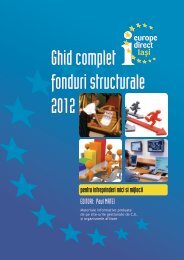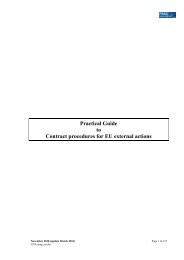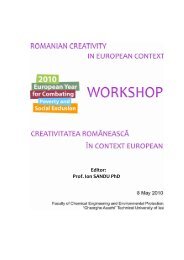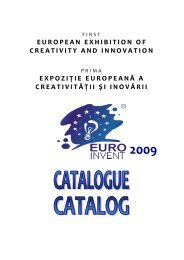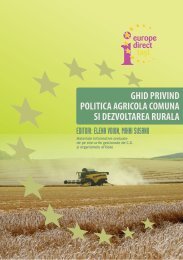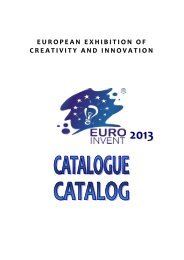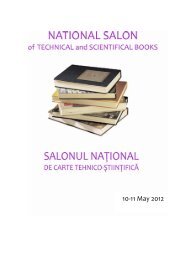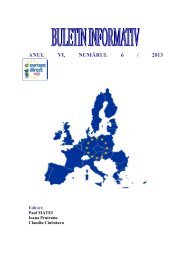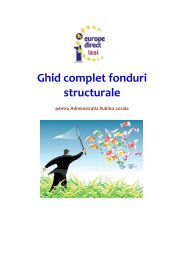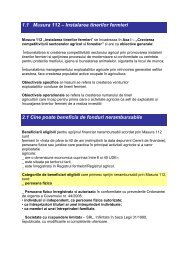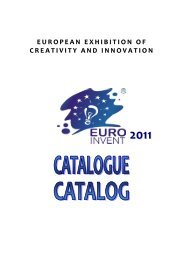2012 - Europe Direct Iasi
2012 - Europe Direct Iasi
2012 - Europe Direct Iasi
Create successful ePaper yourself
Turn your PDF publications into a flip-book with our unique Google optimized e-Paper software.
EUROINVENT <strong>2012</strong><br />
properties of cement board made form rice straw were<br />
comparable with those of other board available in market<br />
X. 35.<br />
Title From Waste To Wealth :’ParBo’ From Biomass of Palm Oil<br />
Authors Muhammad Khairi B. Ramli<br />
Institution Tun Abdul Razak Integrated School<br />
Description<br />
The oil palm consist of only about 30% of the total biomass<br />
produced in the plantation. The remainder of consist of huge<br />
amount of oil palm wastes such as oil palm shells, mesocarp<br />
fibers and empty fruit bunch (EFB) from the mills and the oil<br />
palm fronds oil palm trunks from the field during replanting the<br />
oil palm tree. If the biomass wastes does not utilised,it will<br />
encourage environmental pollution.<br />
One of the biomass wastes is the oil palm fronds. It can be<br />
produces into potential product such as particles board. The flow<br />
chart of the particle board manufacturing are from raw material,<br />
the oil palm fronds to chipping then flaking the chips into<br />
different size of particles. Next is air-drying, screening to four<br />
size of particle( 2.0mm, 1.0mm, 0.5mm and fine size), oven<br />
drying, forming and lastly pressing in hot press to form a particle<br />
board. Testing is conducted to study the density, thickness<br />
swelling, water absorption, and Modulus Of Rupture test.<br />
In conclusion, the biomass waste can be overcome through<br />
producing particles board. This particles board can be used in<br />
furniture making industries and same time reduce the<br />
environmental pollution causes by oil palm frond in plantation<br />
X. 36.<br />
Title AQUERACT<br />
Authors Siti Norsarah Bt Suhaimi<br />
Institution Tunku Kurshiah College<br />
Description<br />
Due to the up growing modernization in the plumbing field,<br />
types of pipes were invented. Typical hoses used for filling of the<br />
portable water tanks in are similar to garden hoses but are made<br />
of non-porous materials that are less likely to collect bacteria or<br />
affect the water’s taste. They are colored white as a<br />
distinguishing characteristic. There are a number of common<br />
attachments available for the end of the hose, such as sprayers<br />
and sprinklers (which are used to concentrate water at one point<br />
or spread it over a large area). The hoses are typically made out<br />
of synthetic rubber or soft plastic, reinforced with an internal<br />
web of fibers. As a result of these materials hoses are flexible<br />
and their smooth exterior facilitates pulling them fast trees, posts<br />
and other obstacles. They are also generally tough enough to<br />
Innovative Researches<br />
187



